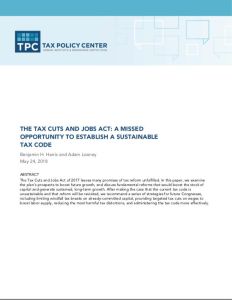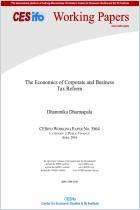Únase a getAbstract para acceder al resumen.

Únase a getAbstract para acceder al resumen.
Benjamin H. Harris and Adam Looney
The Tax Cuts and Jobs Act
A Missed Opportunity to Establish a Sustainable Tax Code
Brookings Institution, 2018
¿De qué se trata?
The 2017 US tax package delivered some reforms, as well as the threat of a soaring debt burden.
Recommendation
In 2017, the United States enacted the Tax Cuts and Jobs Act, which delivers a number of changes for both corporations and individuals. While some cheered the legislation, others took elected officials to task for potentially unleashing significant deficits and creating an even greater fiscal debt burden. Count tax professionals Benjamin H. Harris and Adam Looney among this camp of dissenters in their precise examination of tax-cut effects on the US economy. getAbstract suggests this detailed, comprehensive report to executives and taxpayers.
Summary
About the Authors
Benjamin H. Harris is a visiting associate professor at the Kellogg School of Management. Adam Looney is a senior fellow at the Brookings Institution.





























Comment on this summary